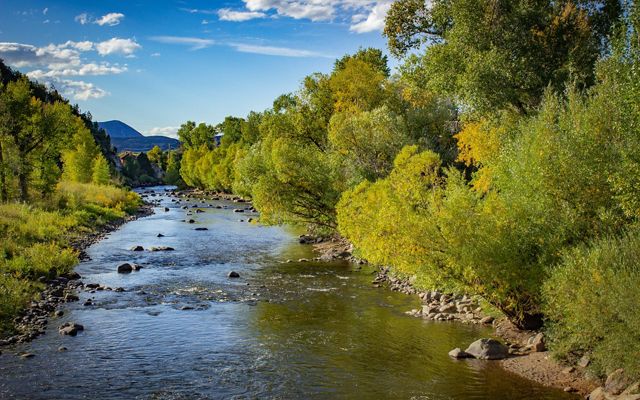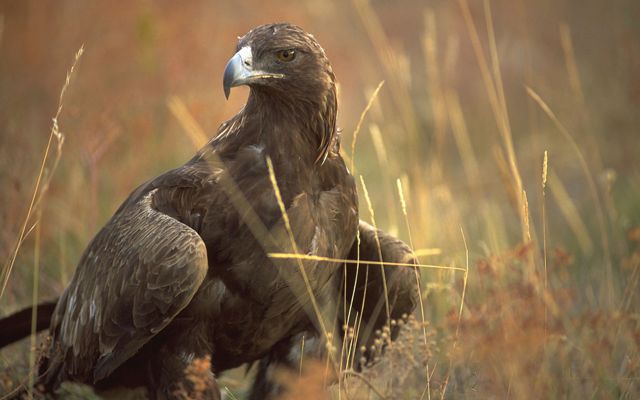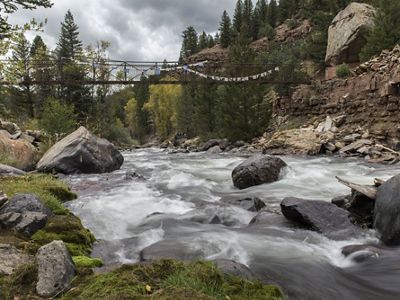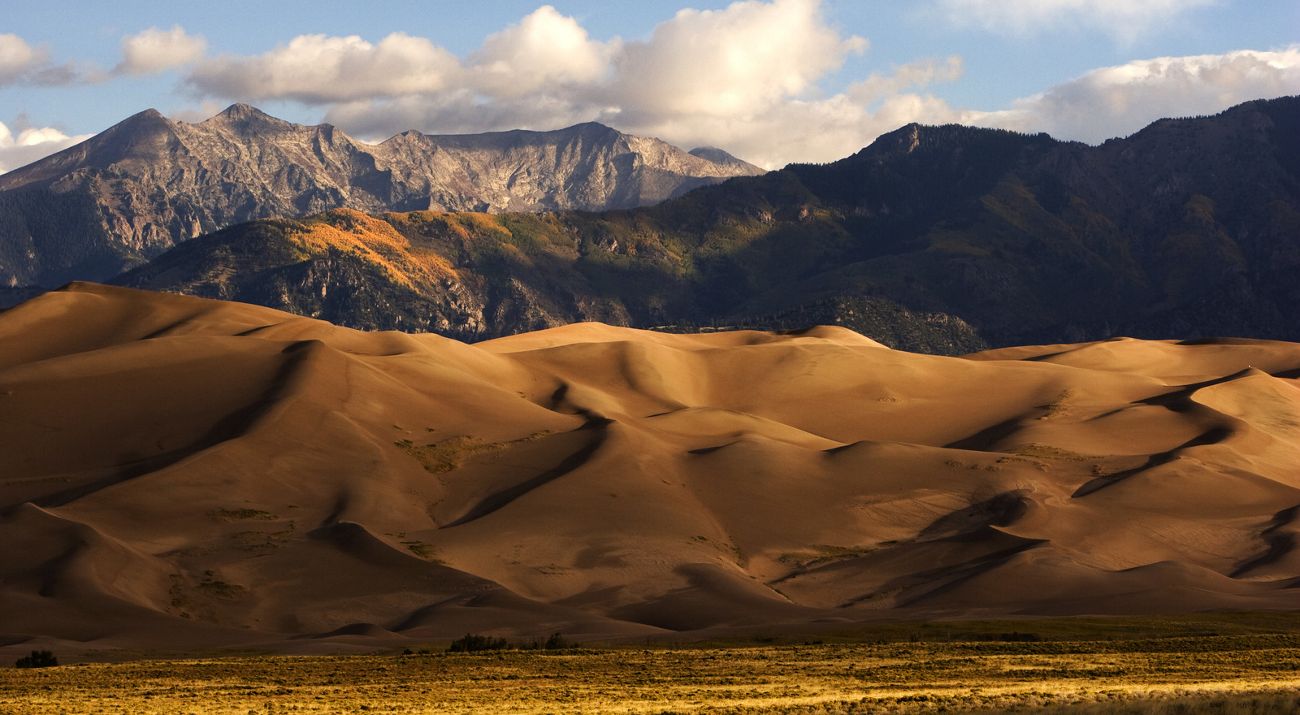15 Must-Visit Road Trip Destinations Across Colorado
Outings for you and your family to enjoy while learning about TNC’s conservation impacts in Colorado.
As we navigate this pandemic, many people are turning to nature for solace, enjoyment, or just a change of pace. Getting outdoors is a healthy response to the stressful and intense times we are living through.
The Nature Conservancy is focused on the safety and health of our staff, partners and supporters. This means that all TNC offices in Colorado are closed and our staff are working remotely. But if you like to get outside, there are many places open to the public where you can see the impact and lasting legacy of TNC’s work. These destinations can be perfect day trips for hiking, watching wildlife, learning about conservation and enjoying nature.
We remind you to follow local regulations and guidance when traveling during this time. Make sure to confirm that areas you’re visiting are currently welcoming visitors, explore at a safe social distance, wear masks when required and avoid large gatherings. With safety in mind, check out this list of places to see in Colorado!
TNC Preserves
First, there are several TNC preserves—land owned and stewarded by TNC—in Colorado that are open to the public dawn to dusk. Click on the preserve name for visitor information and to learn what makes these places important for conservation.
1. High Creek Fen Preserve
Located 8.5 miles south of Fairplay, High Creek Fen is an astonishing vestige of the last Ice Age and contains more rare plant species than any other wetland known in Colorado.
2. Aiken Canyon
A 20-minute drive from Colorado Springs, Aiken Canyon offers beautiful scenery and wildlife viewing in the zone where mountains meet plains.
3. Yampa River
About 20 minutes west of Steamboat Springs, the Yampa River Preserve harbors one of the largest remaining examples of a rare riverside forest dominated by narrowleaf cottonwood, box elder, and red-osier dogwood.
4. San Miguel River
In Southwest Colorado, three TNC preserves support rare streamside habitat along more than 30 miles of the San Miguel River.


Destinations Within Two Hours of Denver
In addition to our preserves, TNC’s lasting impacts can also been seen across Colorado. The places listed below are open to the public, including some off-the-beaten path destinations to explore!
5. Mueller State Park and Dome Rock State Wildlife Area
Teddy Roosevelt visited the Mueller Ranch west of Colorado Springs in 1901 and exclaimed that the scenery was “such as to bankrupt the English language!” Recognizing that the property was threatened by development, TNC purchased the 12,000-acre ranch in 1978. The area is host to wildlife including eagles, elk, black bear and Rocky Mountain big horn sheep. The original ranch is now divided into two state-owned areas: Mueller State Park and Dome Rock State Wildlife Area. Mueller State Park offers 36 miles of mountain biking trails, picnic areas, log cabins, camping and hiking. Dome Rock State Wildlife Area, a prime calving ground for Rocky Mountain bighorn sheep, offers seasonal hunting and fishing, but visitors must have a valid hunting or fishing license to access the area.
6. Boulder Creek
In Boulder, you don’t have to go far to see TNC’s influence on people and nature! Boulder Creek flows with water that TNC helped purchase in 1983. This transaction was the first time in Colorado that a water right was converted from agricultural use to an instream flow, benefitting the river and surrounding habitat. Instream flows are now a common conservation tool to protect water running in rivers for plants and wildlife. Today, Boulder Creek is popular for swimming, fishing, tubing, kayaking, walking, biking and more. Enjoy the creek by walking or biking the Boulder Creek path, picnicking in Eben G. Fine Park, or birdwatching in the restored prairie and ponds north of CU Boulder’s East Campus.


7. White Rocks Nature Preserve
Near Gunbarrel, the White Rocks Trailhead takes you through the rolling hills of a grassland ecosystem. TNC and the City of Boulder entered into an agreement in 1982 to purchase White Rocks Nature Preserve and place a conservation easement on approximately 200 acres adjacent to Teller Lake and Teller Preserve. The area is host to magnificent sandstone outcroppings and supports a wide variety of wildlife including a heron rookery, barn owls and mule deer. Multi-use and handicap-accessible trails are available at White Rocks, with connections to the Teller Farm.
8. Heil Valley Ranch
In 1994, TNC helped purchase the Heil Valley Ranch and transfer it to the City of Boulder. Today, the park has trails for hiking, mountain biking and horseback riding, while still protecting large, connected habitat for wildlife. The 6,231-acre ranch is home to over 50 species of mammals and nearly 100 species of birds. Golden eagles and prairie falcons nest in the cliffs and canyons. While picnic shelters and tables are currently closed, restrooms are available, and the variety of trails and scenery make for a great outing close to the Front Range.
9. Bluff Lake Nature Center
Bluff Lake is a unique urban wildlife refuge in north Denver. It is Denver’s largest open space managed as native habitat. The Bluff Lake Nature Center is dedicated to educating and inspiring people of all ages to respect, protect, and connect with our natural world. More than 8,000 local school children come to Bluff Lake each year to enjoy nature or to take part in scheduled programs or events. TNC in Colorado partners with Bluff Lake to make youth education programs accessible to low-income and underserved children in north Denver neighborhoods. Bluff Lake is open to visitors daily, sunrise to sunset, and offers several walking or jogging trails as well as a self-guided nature tour oriented toward kids.

Destinations More Than Two Hours from Denver
10. Great Sand Dunes National Park
The Great Sand Dunes National Park and Preserve is one of the most biologically significant landscapes of its size in the state. It has several rare insect species, like the Great Sand Dunes tiger beetle, that are found nowhere else in the world. Together with TNC’s Medano and Zapata Ranches, which lie just south of the dunes, the landscape is considered one of Colorado’s hotspots because of the abundance of native and rare species and its connection to vast conserved areas (including the Baca National Wildlife Refuge and the Sangre de Cristo Wilderness Area). In 2000, TNC worked with residents of the San Luis Valley, National Park Service staff, and elected officials to develop legislation to designate the park. In 2004, TNC acquired the 97,000-acre Baca Ranch, which was essential to establishing the national park. Great Sand Dunes National Park is open to the public for hiking, camping, surfing the dunes, playing in Medano Creek, and more. It’s also an International Dark Sky Park, where you can see the Milky Way on dark nights.
11. North Star Preserve
A popular river destination near Aspen for paddle boarding and floating the in the summer, the North Star Preserve was once a historic ranch. In the 1960s and 70s, the ranch was slated for development for up to 1,500 homes. TNC purchased 175 acres of North Star Ranch in 1977 and transferred it to Pitkin County, which began managing the property as the first nature preserve in the county. North Star supports high biological diversity, with at least 107 species of birds and many animals including elk, coyotes, black bears, and bobcats. An especially unique feature is a great blue heron colony, one of only 63 in Colorado. The North Star colony is thought to be one of very few occurring above 8,000 feet. Visit North Star for floating the river or walking the trails. Please remain on trails and do not venture into closed areas of the preserve.
12. Keystone Gorge
Just outside of Telluride, Keystone Gorge features a moderate 2.5-mile loop trail that goes through aspen groves and fir forests and over several crossings of the San Miguel River. The trail lies on a 40-acre parcel that TNC protected in 2006 and transferred to San Miguel County in 2009. The trail offers river views, historic mining ruins, and a quiet adventure close to town. Hikers recommend starting down the south part of the loop, which follows the Galloping Goose trail and is an old railroad grade and hiking up the steeper north side.

13. Picket Wire Canyonlands
These canyons in the Comanche National Grasslands are home to the largest dinosaur track site in North America. Over 1,900 prints in 130 separate trackways extend across a quarter mile of bedrock along the Purgatoire River. This area provides a window into the ecology, history and paleontology of canyon country in southeast Colorado. While TNC wasn’t involved in its protection, in the early 1990s the Colorado Natural Heritage Program (at the time under the leadership of Chris Pague, now Senior Conservation Ecologist for TNC in Colorado) did an ecological inventory of the area. The data gleaned from that effort, and Chris’ personal experience, served as the wakeup call that elevated the little-known region to one of TNC’s biggest conservation priorities. Since then, TNC and our partners have conserved more than 600,000 acres of grasslands in the area. To visit, you can camp at the Withers Trailhead, where there is also a short, 1-mile loop trail with big views. Otherwise, be prepared for heat and long hikes—it’s 11.5 miles roundtrip to see the dinosaur tracks.
14. Black Canyon of the Gunnison National Park
One of the first big western successes in water conservation occurred here when TNC negotiated the transfer of a large water right from a coal mining company in 1988. Instead of a building a dam, the company donated the water rights to TNC to be dedicated to instream flows for the Gunnison River through the area that became the national park. Now, the canyon is loved for its spectacular views, hiking, fishing, rafting and rock climbing. The visitor center is currently closed but viewpoints and trails are open.


15. Fishers Peak State Park
South of Trinidad, Colorado, Fishers Peak was purchased by TNC and the Trust for Public Land in 2019 and transferred to the state in 2020 to become our next—and second-largest—state park. As of October 2020, a small part of Fishers Peak State Park—250 acres—is open to the public. This section of the park includes a ¾-mile trail, a picnic area, and scenic views, and requires a Colorado Parks and Wildlife vehicle pass to enter. As the rest of the park undergoes a planning process, this is a great way to glimpse the incredible landscape and wildlife in the area.
